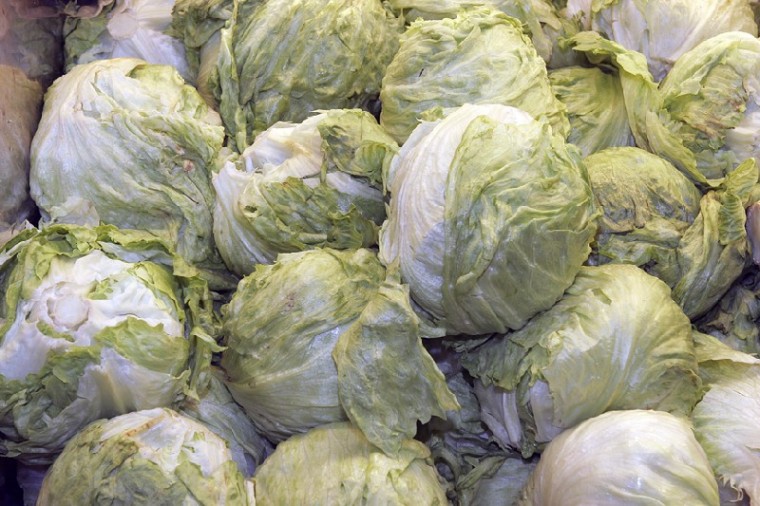
FDA, growers remind consumers to wash veggies and fruit
Even though San Benito County was revealed last week as the
source of the E. coli-tainted spinach that created a nationwide
panic last year, local consumers continue to eat their vegetables
just as they always have.
FDA, growers remind consumers to wash veggies and fruit Even though San Benito County was revealed last week as the source of the E. coli-tainted spinach that created a nationwide panic last year, local consumers continue to eat their vegetables just as they always have.
The spinach scare has still had ramifications in San Benito County. In 2005 there were 3,000-4,000 acres of spinach grown in San Benito County, but San Benito County Agriculture Commissioner Paul Matulich said growers in the county didn’t sell as much during 2006 due to nervous consumers.
He could not give a specific amount of what sold because the 2006 crop report has not yet been published.
“[As to whether the findings will have a lasting affect,] it’s hard to tell. People forget as time passes,” Matulich said. “This year could be bad, but by next year maybe it could be back to normal. There are no guarantees.”
The final word that the tainted spinach that caused a nationwide scare over E. coli was from San Benito County was released from the Department of Health Services last week. The department declined to name the farm, but said it came from a 50-acre farm in San Benito County.
Many factors may have contributed to the tainted spinach.
“People are doing everything in their power to ensure safety, but as long as people are consuming something grown in the fields there are too many variables to ever say people are 100 percent protected against the unknown,” Matulich said.
Growers and producers wash much of their produce before it is brought to market, but Matulich said it is still important for consumers to wash their produce as well.
“[The government] claimed with this type of E. coli it didn’t matter how well the spinach was washed, because washing it didn’t have an effect,” Matulich said.
Matulich suggested that anything that is grown in the fields should be washed before being eaten to avoid unnecessary exposure to contaminants such as dirt, bugs and the occasional foodborne illness.
Local community-supported agriculture advocate and businesswoman Becky Herbert was worried about whether there would be a backlash resulting from the E. coli scares last year. Right before the outbreak her CSA, Eating with the Seasons, was selling spinach every week they had it available. Last week was the first time she offered spring mixes and spinach to her clients again and the customers went crazy for it, she said.
“It was like the hype had died down,” Herbert said. “It was kind of nice to see how the people responded.”
Herbert and her family grow organic produce so she especially understands the importance of washing produce before it is consumed.
“With organic produce there are bugs and dirt so I rinse everything I eat thoroughly,” Herbert said. “It’s better to be safe.”
Local consumers agreed with Herbert. Darlene Jacobson shops at Nob Hill Foods two to three times per week for her family and the family regularly consumes fresh fruits and vegetables.
“I wash everything regardless of whether it has been washed previously or not,” Jacobson said. “If my family eats it, I wash it.”
As a diabetic, retiree David Hawthorne consumes a lot of fruits and vegetables. He washes the food he eats, but he doesn’t overdo it. If something comes pre-packaged, such as carrots, he doesn’t see a need.
“I didn’t really see the big deal with spinach,” Hawthorne said. “I certainly don’t want E. coli, but I cook most of the vegetables I eat anyhow, so I figure I’m safe.”
Patrick O’Donnell can be reached at po*******@**********ws.com
Food safety tips
Harmful bacteria that may be in the soil or water where produce grows may come in contact with fruits and vegetables and contaminate them. Or, fresh produce may become contaminated after it is harvested, such as during preparation or storage.
Eating contaminated produce (or fruit and vegetable juices made from contaminated produce) can lead to foodborne illness, which can cause serious – and sometimes fatal – infections. However, it’s easy to help protect yourself and your family from illness by following safe handling tips.
– Proper storage of fresh produce can affect both quality and safety.
Certain perishable fresh fruits and vegetables (like strawberries, lettuce, herbs, and mushrooms) can be best maintained by storing in a clean refrigerator at a temperature of 40° F or below. If you’re not sure whether an item should be refrigerated to maintain quality, ask your grocer.
All produce that is purchased pre-cut or peeled should be refrigerated to maintain both quality and safety.
Keep your refrigerator set at 40° F or below. Use a fridge thermometer to check.
– Proper preparation of produce
Begin with clean hands. Wash your hands for 20 seconds with warm water and soap before and after preparing fresh produce.
Cut away any damaged or bruised areas on fresh fruits and vegetables before preparing and/or eating. Produce that looks rotten should be discarded.
All produce should be thoroughly washed before eating. This includes produce grown conventionally or organically at home, or produce that is purchased from a grocery store or farmer’s market. Wash fruits and vegetables under running water just before eating, cutting or cooking.
Even if you plan to peel the produce before eating, it is still important to wash it first.
Washing fruits and vegetables with soap or detergent or using commercial produce washes is not recommended.
Scrub firm produce – such as melons and cucumbers – with a clean produce brush.
Drying produce with a clean cloth towel or paper towel may further reduce bacteria that may be present.
Tips courtesy of the Food and Drug Administration Web site.









